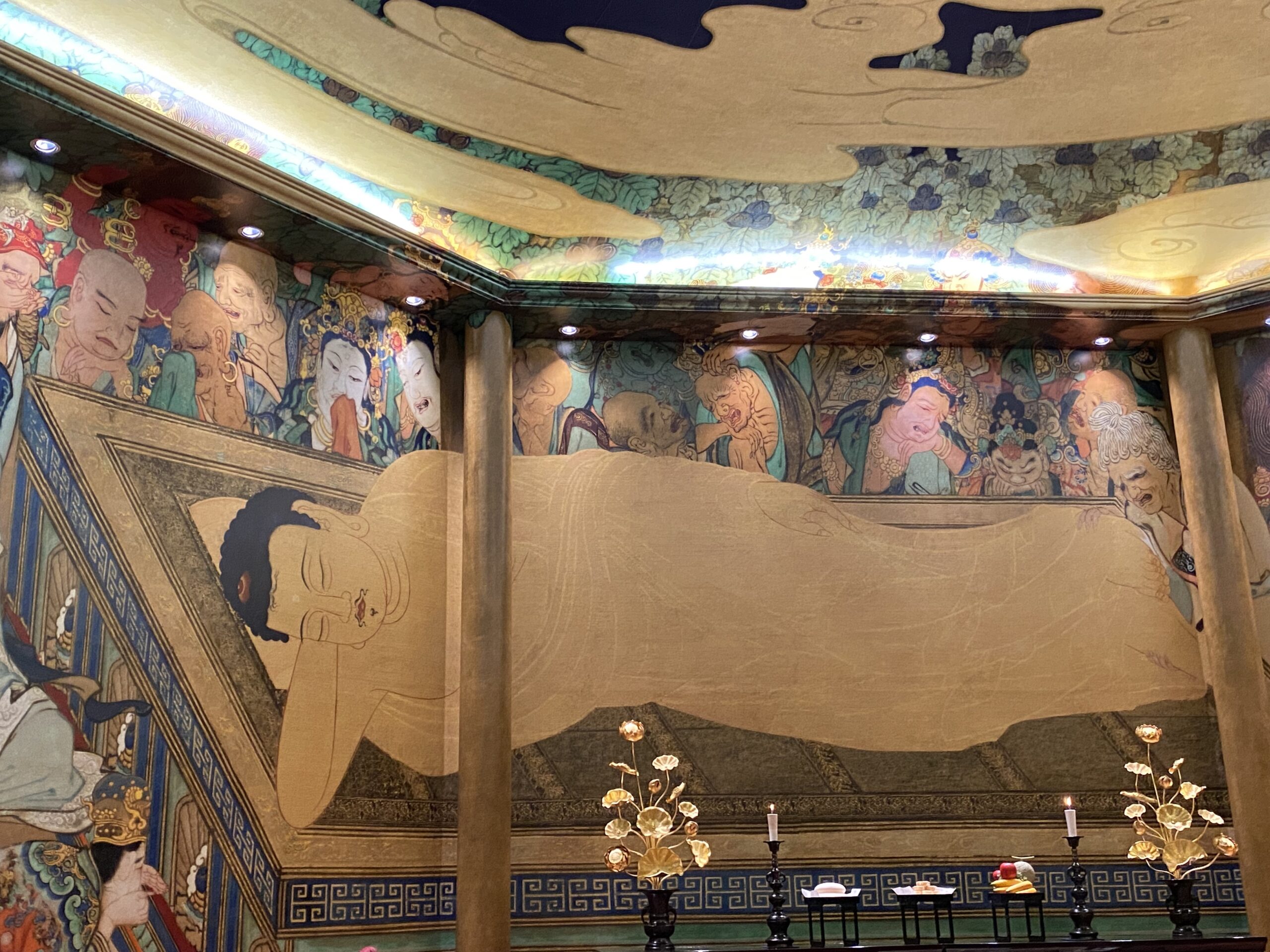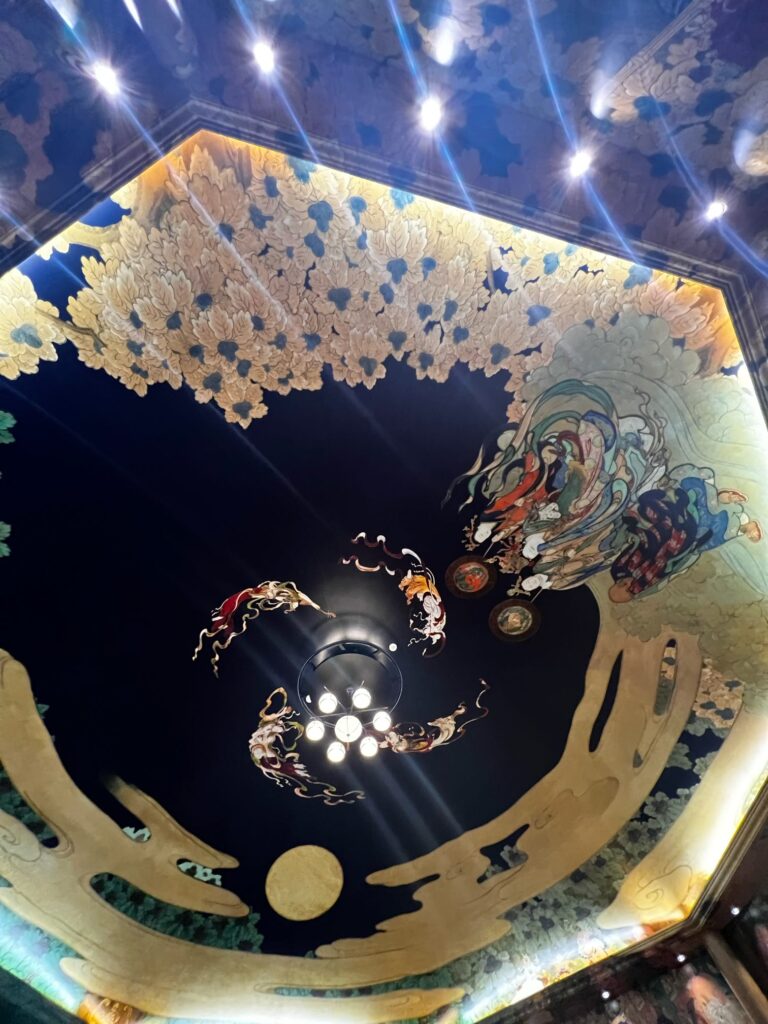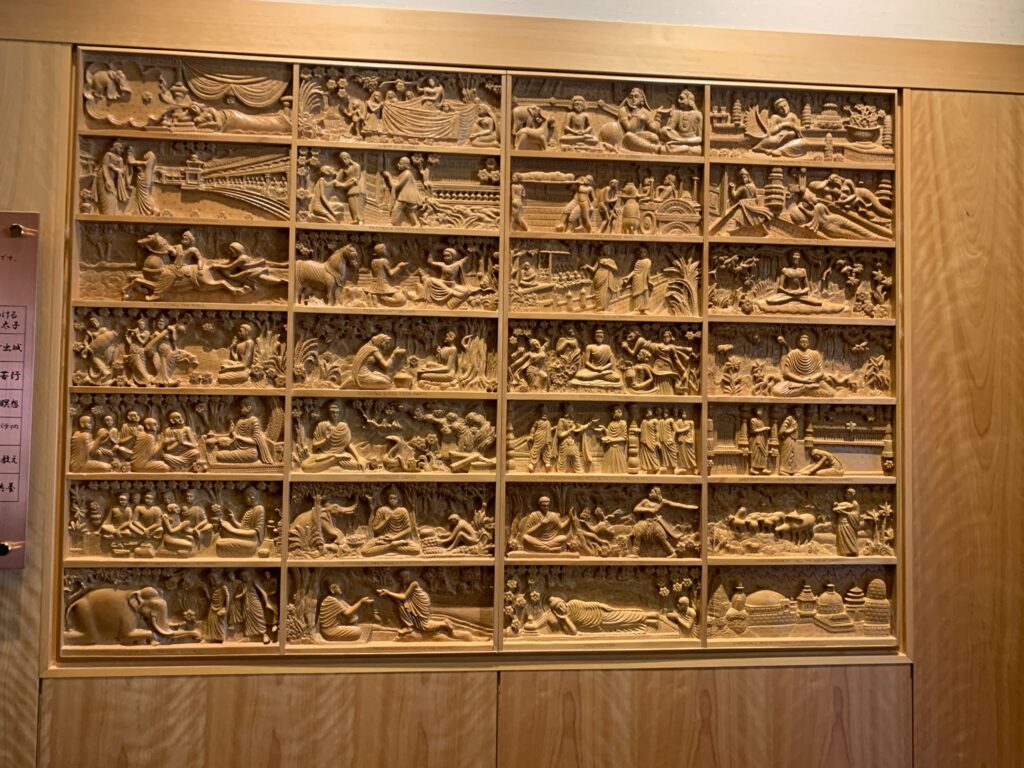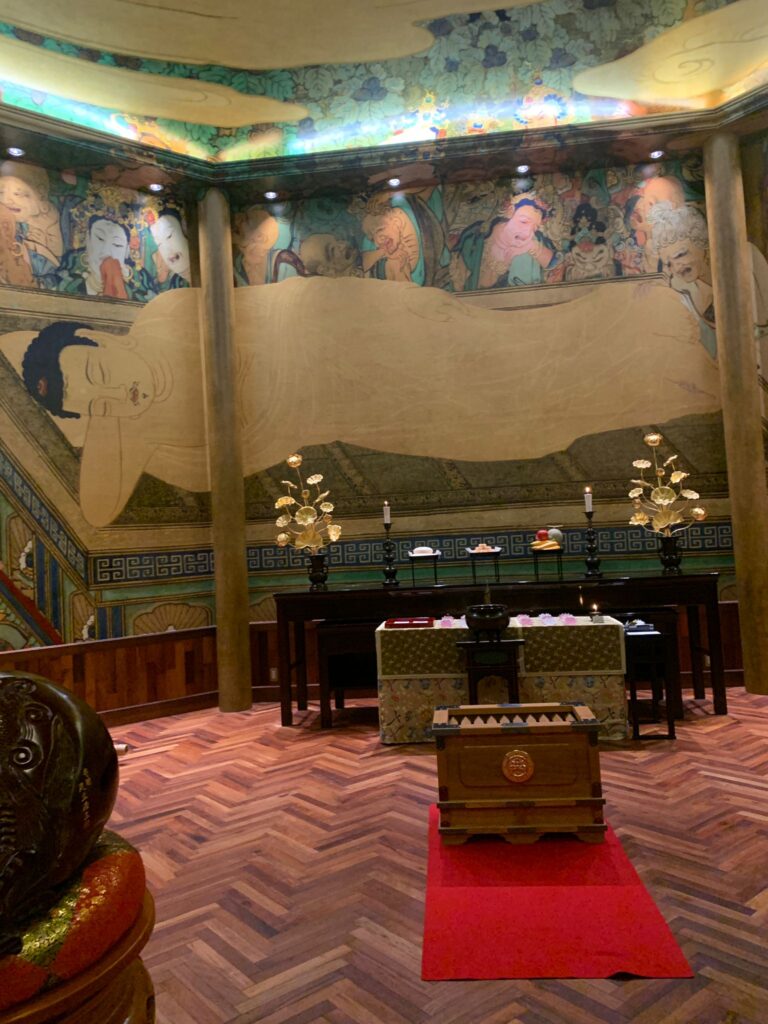
Housed in Rishōdo Temple, right next to Ryōzen Kannon, paintings depicting the death of Buddha hold significant cultural and religious value, encapsulating the final moments of Gautama Buddha’s life on earth.
These sorrowful artworks portray the transition to Parinirvana, symbolizing the completion of enlightenment and liberation from the cycle of birth and death.
Rishōdo Temple exists to honor these paintings and provide a space for contemplation. Visitors can explore the heartfelt meaning in the paintings and dive into the architectural tribute dedicated to this spiritual event.
The Death of Buddha paintings, also known as Parinirvana paintings, capture the momentous event when Gautama Buddha attained Parinirvana, the greatest spiritual goal in Buddhism. These artistic portrayals serve as a visual reminder of the temporariness of life, the stoppage of suffering and the path to enlightenment.
The paintings often depict Buddha lying on his right side, surrounded by mourning followers, divine beings and numerous symbolic elements. The serene image of Buddha in his final moments transmits a sense of tranquility, wisdom and transcendence. The artworks aim to evoke deep thoughts on the impermanence of life, urging viewers to reflect upon the temporary nature of existence and the importance of achieving spiritual liberation.
Architectural art
Rishōdo is a dedicated building that houses, honors and carries the importance of the Death of Buddha paintings. This structure provides a space where visitors can immerse themselves in the heartfelt symbolism and ponder the teachings of Buddha. Such a building, designed to pay tribute to the Death of Buddha paintings, represents an architectural fusion of art and spirituality. The design of this building is assembled to create an atmosphere beneficial to self-analysis and admiration.
As visitors enter the building, they are welcomed by an impression of tranquility and contemplation. The interior walls are crafted with the Death of Buddha painting, carefully arranged to guide observers through the stages of the Buddha’s final journey.
Each work of art on any wall portrays a specific moment or aspect of the Parinirvana event, allowing viewers to witness the spiritual transition firsthand. The architectural details of the building complement the paintings, enhancing the overall experience. Soft lighting and subdued colors create an environment that encourages deep reflection. The space is intentionally absent of distractions on the floor, allowing visitors to focus their attention solely on the overpowering imagery before them.
Engagement
Visitors to Rishōdo are invited to engage with the paintings in multiple ways. Some may choose to meditate silently, while others may participate in prayers or in guided contemplation led by knowledgeable guides. The purpose is to supply a space for individuals to connect with the deeper spiritual teachings embodied by the Death of Buddha paintings.
The Death of Buddha paintings and the dedicated building, Rishōdo, is constructed to honor and provide a heartfelt spiritual experience. These artworks serve as a visual gateway to the final moments of Gautama Buddha’s life, symbolizing enlightenment, liberation, and the impermanence of existence. The architectural tribute to the Death of Buddha paintings create a sacred space for reflection, inviting visitors to dive into the depths of their own spiritual journey.
Through the combination of art, architecture, and spirituality, Rishōdo is a sanctuary of contemplation, encouraging a deeper understanding of Buddhist teachings and motivate spiritual growth.










